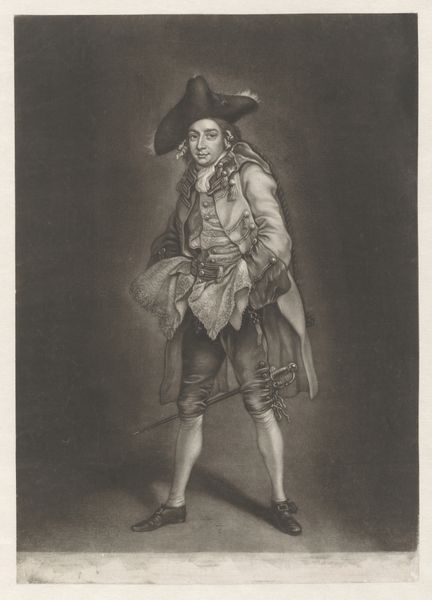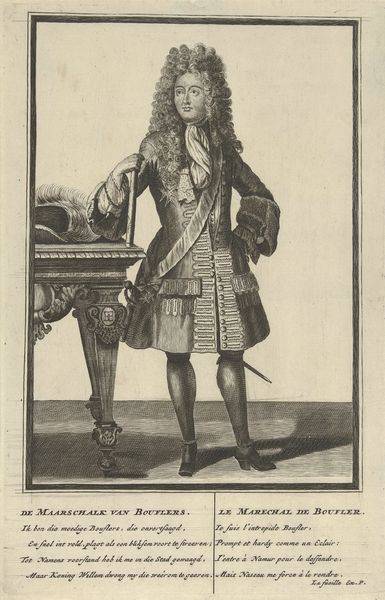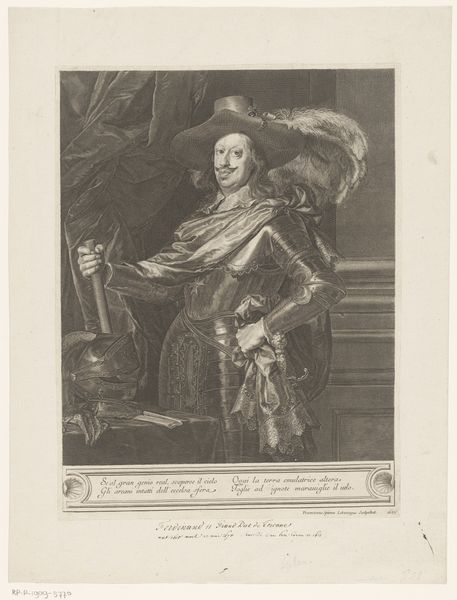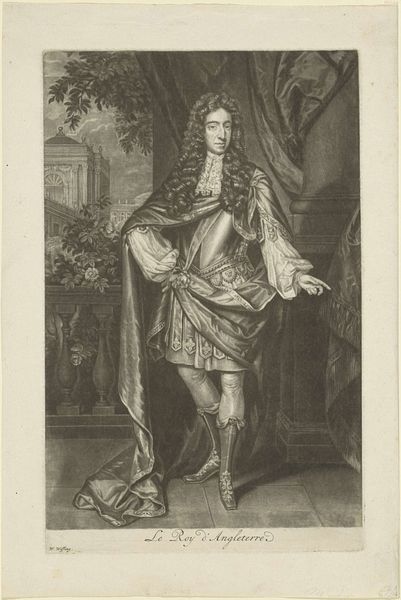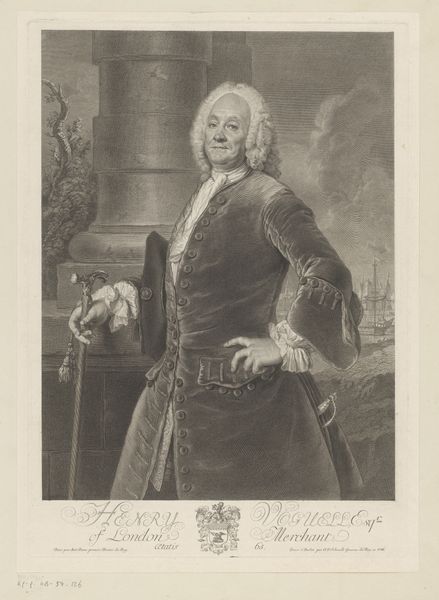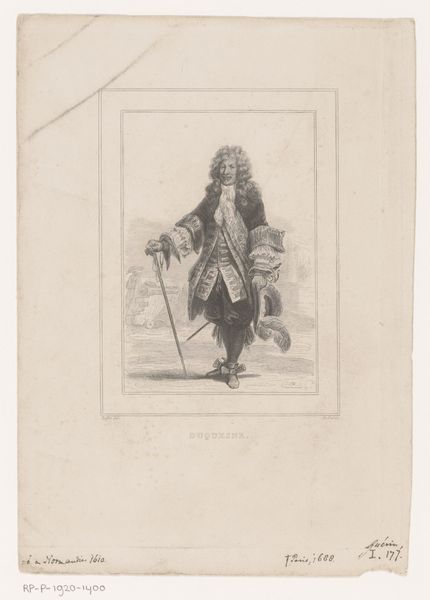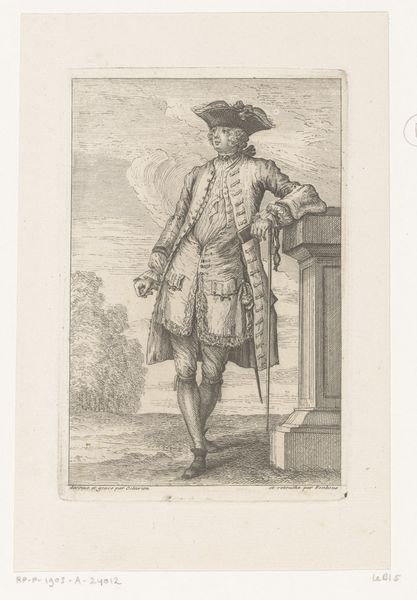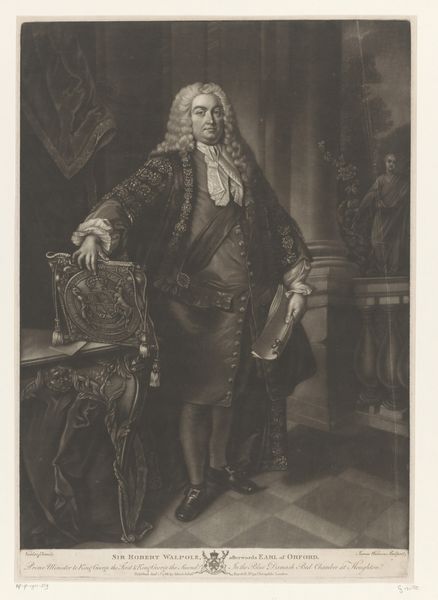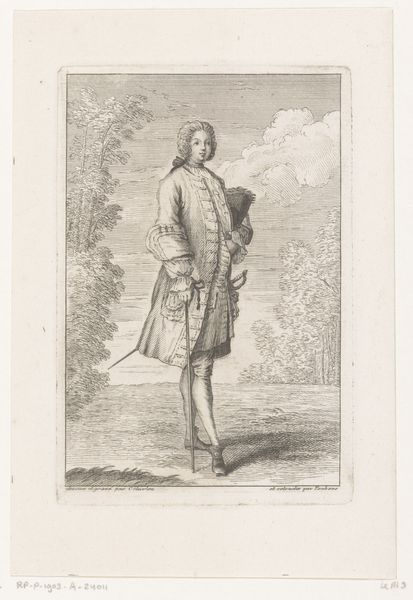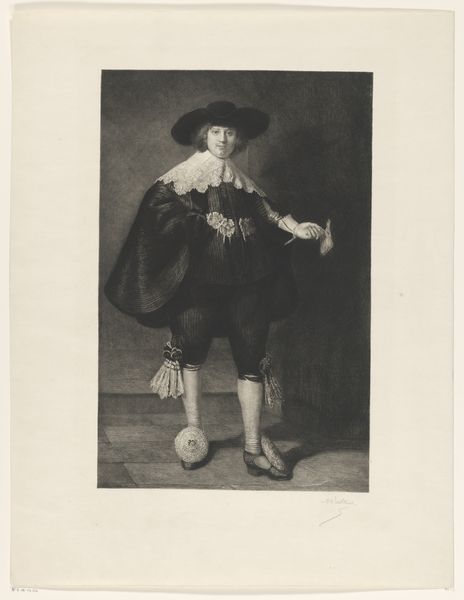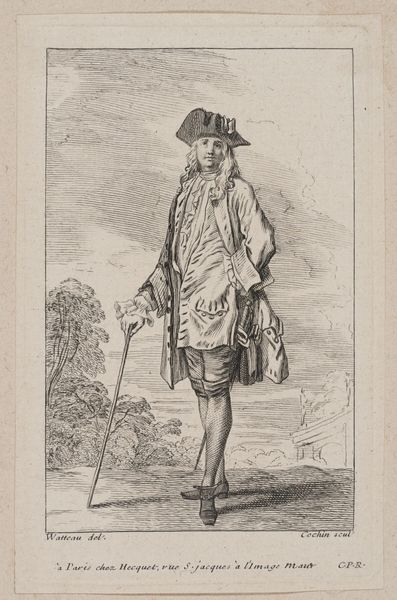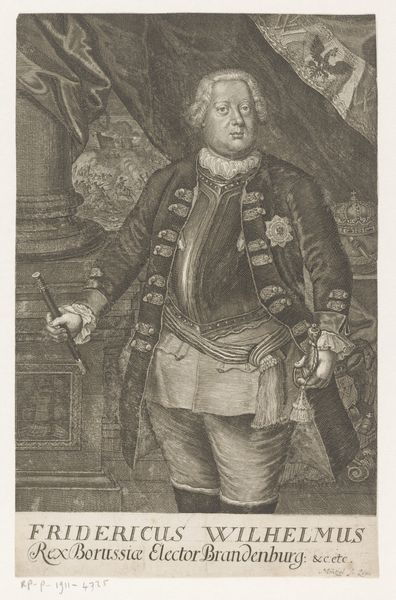
engraving
#
portrait
#
baroque
#
history-painting
#
engraving
Dimensions: height 355 mm, width 252 mm
Copyright: Rijks Museum: Open Domain
Editor: Here we have "Portrait of Henry Woodward as the Fine Gentleman from Lethe," an engraving made sometime between 1748 and 1765 by James McArdell. The composition seems intentionally theatrical, from the man's pose to the architectural backdrop. How do you approach this image, focusing on its intrinsic artistic qualities? Curator: Observe how the engraver utilizes the medium to create contrast, directing the eye. The subject is set against the pillar in the foreground, juxtaposed with an outdoor scene in the background. The play of light across the figure's coat, juxtaposed against the darker breeches, divides the composition. It leads us to a certain spatial tension. Editor: Spatial tension? Could you explain that a bit further? Curator: Certainly. Note the flatness of the engraving versus the illusion of depth. The receding landscape clashes with the solidity of the architectural elements, a deliberate arrangement. Do you perceive how the artist creates a sort of visual puzzle for us, balancing the flatness inherent in engraving with a depth? Editor: Yes, I see. It's like McArdell is consciously drawing attention to the artifice, not just of the theater portrayed, but of the artistic representation itself. The use of line is impressive. Curator: Indeed. It invites us to contemplate the medium as much as the subject. What have you gleaned from our short analysis? Editor: It makes me see how even a portrait ostensibly about a person can really be a statement about the artistic process itself, particularly regarding the dialogue between surface and depth. Thank you for showing me this new way of interpreting the engraving's significance.
Comments
No comments
Be the first to comment and join the conversation on the ultimate creative platform.
